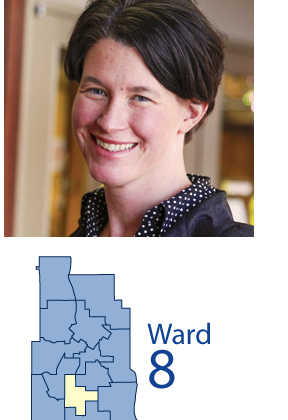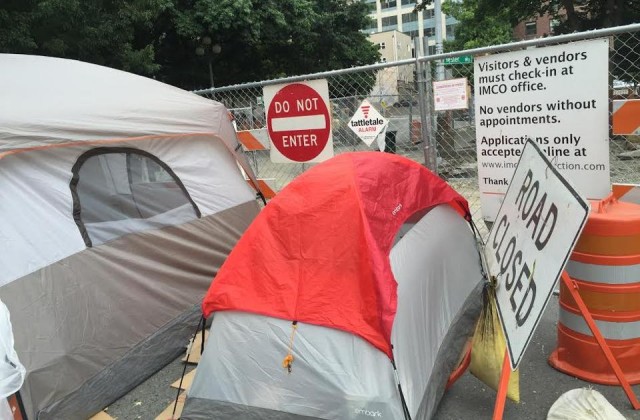Part 1. Affordability, Price, and Measuring a “Crisis”
When we talk about housing in Seattle, affordability dominates the conversation. Close behind are parking and design issues that tend to bother neighbors, and after that is the notion that somehow we’ve grown too much, too fast and the quality and character of life in Seattle is changing for the worse. But housing prices, expressed as numbers, and how people feel about those prices and the effect they have on people, and what to do about the situation eventually eclipse every other aspect of the discussion. Why and how did housing affordability become the political, economic, and ideological battleground it has become?
Affordability, Price, and Measuring a “Crisis”
Price is a relatively simple thing to understand for most people. If you ask a cross section of people what happens to the price of a product when it is scarce, they’ll certainly say, “The price goes up.” That same group, if asked about whether something is affordable, would likely respond, “It depends.”
For most human beings, whether something is affordable is a complex relationship between utility, values, income, hope for the future, and even things like vanity and personal disposition. Everyone can think of that cheap friend or relative, or the one who spend extravagantly on his car or clothes even though he doesn’t earn very much money.
Price doesn’t mean very much by itself until it hits the real world and people make decisions based on these complex, vague, and qualitative notions of what is “affordable” and what isn’t.
Here’s another factor: poverty. There is a big difference between a person who is struggling what is affordable on a dinner menu at a fancy restaurant and one who doesn’t have enough money to buy food at all. This distinction, one between what Keynes calls marginal disutility and catastrophic poverty is important, and easy to see in extreme cases. But when does marginal disutility become poverty; that is, when does a person’s relationship to price given their income and resources go from being an inconvenience to a crisis?
If you want to throw a monkey wrench into discussions about Seattle’s “housing crisis,” ask the person using the term, “When did the crisis begin.” They’ll have no good answer. The smarter person will recognize the intellectual blind alley you’ve invited them to enter and respond with some point in time at which price started going up. Others might cite month over month or year over year rent increases so often uncritically written about in the Seattle Times. Most will roll their eyes, wave their hands, and say “C’mon, you know what I’m talking about!”
The truth is that Seattle’s “housing crisis” resides somewhere between hysteria and hoax. The housing crisis is what analysts of language and culture often refer to as a shibboleth, something everyone simply accepts as true without much thought. It is happening, and to question it is automatically discrediting to the person questioning it’s relaity.
But if we critically think about how we make economic policy in the wider world, one measure used as common currency is the term recession. A recession has a clear, quantitative definition: a “period of general economic decline, defined usually as a contraction in the GDP for six months (two consecutive quarters) or longer.”
People of all types – experts, lay people, and politicians – can and do argue about what a recession means, how deep it is, how long it will last, and whether it really reports what’s going on in real people’s lives. But it has a beginning, middle, and end. We know when it starts and when it’s over. But the housing crisis? Nobody has a clue.
That fact itself is easy to dismiss, and the City bureaucracy, the brainiacs at the Sightline Institute, the Mayor and Council, and the Mad Lib writers at the Seattle Times have all just joined in decrying the “crisis” and offering solutions to how to put it to an end. The problem is that how will we know it’s over, the crisis not having any measurable beginning or any quantitative measure to express what not being in crisis is like.
To be accurate, prices have gone up (prices for X have gone up Y percent over X period of time) and we can measure that phenomenon. But when did such rises in price become a crisis? And what do we think accounts for that price increase, who is impacted, and what are the policies that might increase housing production adequately enough to alleviate suffering or disutility?
We don’t know or have even a method to work that out. Sure, we have the sledgehammer of assuming that people ought to spend 30 percent of their gross monthly income on housing, but that’s it. Based on that, the solution to the “crisis” would be that all or most households at least (what percent is a mystery) are paying 30 percent of their gross monthly income on housing. Again, almost everyone on all sides will wave their hands at this as if it is not only unimportant but also almost mean or discourteous.
Finally, we do know that several thousand people will sleep outside, in tents, or in their cars because they have no other good options. Some will be in shelters. Some will stay in dangerous or harmful situations to avoid being without shelter. And some other number of people is facing the real possibility they won’t be able to pay rent next month. For these people, by almost any measure, housing and many other aspects of their lives are in or entering what could be considered a crisis phase as defined in the dictionary, “an unstable or crucial time or state of affairs in which a decisive change is impending.” For many, however, the change for the worse happened some time ago.
Now some will say, “Those are the people I’m talking about.” Really? If that was the case, then our policy discussion wouldn’t be about the rent for a one bedroom apartment in Capitol Hill and it’s change over months, but the urgent need to bring a broad range of resources to address people without adequate shelter and how we might prevent others from joining them. But that discussion has already been going on for decades – remember the 10-year plan to end homelessness that was promulgated well over a decade ago?
Today’s housing policy conversation is one characterized by muddy thinking about what the problem is even though we know that rising prices are an indicator of scarcity, that is, lack of supply. Addressing that lack of supply, still, is a matter of controversy. And even those who agree that more supply is needed, usually hedge, giving in to what they call, “political realities.” I’ll dig into those in the next essay.
In Defense of MORE Housing: New Book is a Distraction
Over at Forbes I’ve offered a more sustained take on a book that debuted last year called In Defense of Housing. It’s a version of a discussion I had year about a year ago about whether housing should be a right. The truth is it really doesn’t matter. The book spends its pages make the case the the problem with housing is that it is a commodity, bought and sold for a profit. Fair enough. That’s true. But what the book gets wrong is that housing is a commodity because it is scarce. When someone rents and apartment to sublet that rental at a profit, the problem is not the commodification of housing but the fact that it is so scarce the price causes hoarding behavior. Once a person finds himself with something so valuable, he’s incentivized to do something profitable with it. Commodification is a symptom of scarcity, not the cause. I used the water hole scene in 2001: A Space Odyssey to make this point.
I think the scene is perhaps one of the best explanations of human nature and behavior around scarce resources. Our ancestors in the scene are faced with a crisis: one group is setting up barriers to the water hole. Water is essential. It isn’t a luxury now and it wasn’t then. But in the film, the dominance of one group means trouble. One of the monkeys gets an idea. Maybe through intimidation and force he can dislodge the other clan from the water hole. The scene is epic because it illustrates how scarcity leads to violence and the establishment of hierarchies of power around resources. Once the monkey kills the other monkey he’s now not only got access to the water, but something even more intangible and worrisome: power. Imagine how the scene would have played out if the monkey had instead figured out how to use the bone to dig another water hole. More water would mean no need to kill anyone.
This scene could just as easily be a design review meeting or a gathering of a mob of angry neighbors worried about microhousing, small lot housing, or zoning changes. Once the mob is assembled and one of the angry neighbors leading the charge is successful at encouraging something really stupid like Councilmember Mike O’Brien’s abutting lot legislation, they not only get their way about a project but they also accrue power. That power builds and ends up dominating the discourse and influencing policies that make housing scarcity worse.
I like the book. It’s well written and compelling. What I don’t like is that many left leaning and well meaning people are waving it around like it’s the answer. It isn’t. It’s a waste of valuable intellectual space. We can argue all day about how making housing a right and the abolition of private property would end the housing problem. It won’t. All that will happen is that households in need will trade high prices for rationing. We need more housing, and that means standing up to entitled neighbors and saying, “No! We will build housing in your neighborhoods. Lots of it. Get over it!” Anything short of that will guarantee shortages whether housing is a commodity or not.
Collaboration: Minneapolis Knows How, Seattle’s Council Doesn’t Have a Clue
There are a bunch of protections in state law against discriminating against people who are wanting to rent an apartment based on sex, religion, or race. They make sense, and in fact, they ought to be expanded to include sexual orientation. We think those decisions are best made at the state level. Why? Because Seattle has demonstrated a complete lack of sense when it comes to making decisions about imposing more rules on how renting works in Seattle. Based entirely on a few anecdotes about units being rented only to Amazon employees, the Seattle City Council essentially added to the list of protected groups to include people who show up to rent a unit first. We’ve advocated for taking the power back to the state level by preempting these arbitrary and unhelpful rules. There is a better way to do all this, and Minneapolis City Councilmember Elizabeth Glidden shows how.
One of the protected classes in parts of Washington are people with what are called Section 8 vouchers, a subsidy program that allows households who need help with rent can spend their voucher toward market rate rents. In Seattle, for example, a landlord can’t deny a potential tenant based on the fact that she wants to use a voucher.
Minneapolis doesn’t have this requirement but Councilmember Glidden wants to create one. The first thing she did was actually talk to landlords! Imagine that. She engaged with the rental housing community and asked them what they thought of the idea. Then she did another really crazy thing, she listened to what they said! Landlords said they didn’t want to be forced to take tenants with vouchers. Their concern is that often payment for the vouchers is uneven and unpredictable leading to gaps in payment from the agencies giving the vouchers. Also, they believe its riskier in many cases to rent to tenants with vouchers. That isn’t because people with vouchers are necessarily bad, but in many cases vouchers are given to tenants who don’t qualify for public housing because they have a bad rental history. The agency denies them a lease, then sends them off with a vouchers.
The concern anyone has who is renting anything is risk: what happens if what I am renting, a car, a boat, a house, a book, anything, comes back to me damaged. Obviously this is what deposits are for. But landlords believe that Section 8 tenants do more damage and end up not paying for it even when taking into account the deposits. It’s too risky and voucher tenants can’t pay higher deposits — they don’t have very much money, which is why they have a voucher in the first place.
So Glidden has proposed this thing called an incentive to encourage landlords to follow the new rule she is proposing. What’s the incentive? A City fund that would help defray the costs of any excessive damage or other issues that might come from renting to tenants with vouchers. Lots of City staff and service providers believe that Section 8 tenants do really do all that much damage, and Councilmember Glidden is willing to bet on that with real money. If it turns out they do a lot of damage, then the City will help off set that. It’s called collaboration! And even though landlords will likely still oppose this, it’s an actual compromise that could make sense, reassuring landlords, helping tenants who need a place to live, and testing out the assumptions of both landlords and Glidden. Either way, tenants with fewer dollars are the winners.
By stark contrast, the Seattle City Council never talks with landlords in Seattle and they don’t listen. And we’ve asked them to consider a revolving fund rather than a deposit cap. There wasn’t even a response. There is no interest in compromise or collaboration. The Seattle City Council makes rules that simply make things more complicated and risky. The first in time rule doesn’t help anyone who is needy, it just rewards the first person who shows up and it denies the landlord the ability to chose among equally qualified people. What if a landlord wanted to rent to a teacher who showed up third rather than the brogrammer that showed up first? Not going to happen. That’s now illegal.
And as for the deposit cap, rents will simply go up to capture higher deposits and smaller landlords simply won’t rent anymore, putting their single family home on the market or running more rigorous screening to help offset the potential damage. That means people with bad credit, which is probably true of most people with less money, won’t get the unit. This is totally the opposite of the stated intent of the rules.
I spoke with the housing director in Minneapolis and she said that their City Council is looking to Seattle for leadership on these issues. I said, don’t. Look the other way. We don’t know what we’re doing! But she and the Councilmember are the real leaders, doing the basic work of good government, engaging the people closest to the issue, listening to what they say, and responding so that real people benefit.
Guest Post: Attract Private Investors to Finance Housing for the Homeless
When the Mayor declared Seattle’s homelessness epidemic a state of emergency one year ago, he reported that more money should be spent on “housing-focused” solutions.[1] Providing immediate access to permanent supportive housing has been proven effective in ending chronic homelessness.[2]
Last September, the city issued a “Pathways Home” plan for tackling the homelessness emergency. Marking a shift in policy, it demands a “relentless focus on permanent housing.”[3] The plan also acknowledges that the current investment process is outdated and uncompetitive. Going forward, it prioritizes “performance based contracting” with a focus “on obtaining specific, measurable performance outcomes.”
This data-driven approach is commendable, but doesn’t go far enough. What if the measurements reveal housing goals still aren’t being met? The proposal weakly threatens, “funded agencies will be expected to implement improvement strategies and quickly demonstrate improvement if performance is below expectations.”
Make payment contingent on whether those measured outcomes are actually achieved.
Local organizations, such as Plymouth Housing and the Downtown Emergency Services Center, have a track record of building and operating permanent supportive housing.[4] [5] But Seattle’s soaring real estate market is making development of these projects harder to finance. Additionally, half of all funding for homelessness programs in King County comes from the federal government, now controlled by Republicans who appear intent on cutting spending on social programs.[6]
Private investors could fill this funding gap and earn a small return in the process. Foundations, nonprofits, companies, and individuals could loan money to local nonprofits to begin building housing units.
The city would guarantee that if specific measurable impacts are achieved, it will repay the investors, plus pay a modest return linked to the scale of the outcomes. An independent evaluator would be assigned to measure whether each project’s impacts met preset criteria.
In addition to the number of people housed, it is logical to target those impacts that would save the city the most money, such as reduced shelter stays, jail visits, or treatments by paramedics. (If the project were unsuccessful in meeting these goals the investors would be repaid less.)
The “pay-for-success” financing mechanism I’ve just described—also called a “social impact bond”—is already being used by other US governments to tackle their own homelessness crises.
In 2014 Massachusetts launched a pioneering initiative to provide 500 units for chronically homeless individuals.[7] In two years, $3.5 million in philanthropic and private capital investments have saved the commonwealth 33,151 nights in shelters, 2,286 days in hospital, and 737 emergency room visits.
Denver plans to house 250 chronically homeless people using Social Impact Bonds.[8] The initial development will house 25 individuals, thanks to $8.7 million from a syndicate of eight impact investors, leveraged with an additional $15 million in federal money. It aims to reduce the target population’s jail stays by at least 35% while increasing their housing stability by 83%. Investors will be paid $9.5 million if these impacts are achieved. Salt Lake City and Santa Clara County have launched similar schemes.[9] [10]
Pay-for-success shifts risk to the private sector, which appeals to fiscal conservatives, while expanding funding to social welfare services. The rates of return to the investors would be modest, but unlike purely philanthropic giving, the money is returned and can be redeployed again and again.
The Mayor’s 2015 Housing Affordability and Livability Agenda (HALA) Committee urged the city to explore Social Impact Bonds as one type of “local opportunities for Social Investments in housing.”[11] But there hasn’t been serious discussion of this emerging pay-for-success model since.
Seattle could begin harnessing additional outside investment dollars, while committing to only pay for those outcomes that are achieved. By matching capital to impacts, the city could measurably improve more lives than if it relies on public funding alone to solve our homelessness emergency.
Alastair Townsend is an architect, who is completing a master’s degree at the University of Washington’s Runstad Center for Real Estate Studies.
[1] Murray, E. B., & Lester, C. (2016). Homeless State of Emergency Implementation Plan (p. 5) (City of Seattle, Human Services Department). Retrieved 13 February 2017, from http://www.seattle.gov/Documents/Departments/pathwayshome/SOEImplementationPlan.pdf
[2] Housing First Checklist: Assessing Projects and Systems for a Housing First Orientation. (2017). Usich.gov. Retrieved 13 February 2017, from https://www.usich.gov/tools-for-action/housing-first-checklist
[3] (2016). Pathways Home, Seattle’s Person-Centered Plan to Support People Experiencing Homelessness (P. 33) (City of Seattle). Retrieved 13 February 2017, from http://www.seattle.gov/Documents/Departments/pathwayshome/ActionPlan.pdf
[4] Our Properties | Plymouth Housing Group. (2017). Plymouth Housing Group. Retrieved 13 February 2017, from https://www.plymouthhousing.org/what-we-do/our-properties/
[5] DESC (2017). Supportive Housing. Desc.org. Retrieved 13 February 2017, from http://www.desc.org/housing.html
[6] All Home. (2015). All Home Strategic Plan 2015-2019. (P. 13). (All Home) Retrieved 13 February 2017, from http://allhomekc.org/wp-content/uploads/2015/09/All-Home-Strategic-Plan.pdf
[2] MHSA Launches Pay for Success Program to Combat Chronic Homelessness | Massachusetts Housing & Shelter Alliance. (2017). Mhsa.net. Retrieved 13 February 2017, from http://www.mhsa.net/news/mhsa-launches-pay-success-program-combat-chronic-homelessness
[3] Denver homeless initiative would be latest to tap social impact bonds – The Denver Post. (2017). Denverpost.com. Retrieved 13 February 2017, from http://www.denverpost.com/2015/01/24/denver-homeless-initiative-would-be-latest-to-tap-social-impact-bonds/
[4] Harris, J. (2017). Pay for Success aims to helps homeless. KUTV. Retrieved 13 February 2017, from http://kutv.com/news/local/pay-for-success-aims-to-helps-homeless
[5] Third Sector Capital Partners. (2013). From Idea to Action: Pay for Success In Santa Clara County. (Third Sector Capital Partners.) Retrieved 13 February 2017, from http://www.thirdsectorcap.org/wp-content/uploads/2015/02/131118_Third-Sector-Capital-Partners_Santa-Clara-Case-Study.pdf
[1] HALA Steering Committee. (2015). Seattle Housing Affordability and Livability Agenda, Final Advisory Committee Recommendations To Mayor Edward B. Murray and the Seattle City Council
(p. 18). Retrieved 13 February 2017, from http://murray.seattle.gov/wp-content/uploads/2015/07/HALA_Report_2015.pdf
Master Builder: Reducing Costs of Building is in Everyone’s Interest
In this month’s Master Builder Magazine, I’ve articulated our argument for getting more efficient in the way resources are being used to produce non-profit affordable housing in Washington State. Bringing up this point, that low-income units produced by non-profit organizations are very expensive, makes many people unhappy. They often say, “Your math is wrong,” or, “It’s not a fair comparison.” Some have even claimed that the 200 units built by Capitol Hill Housing (CHIP) and El Centro de La Raza really aren’t almost $500,000 per unit, even though dividing the total cost of the units by the total cost of $92 million is $460,000 per unit. On the CHIP project, I have found sources and uses for the $47 million it took to produce 88 units. And, according to Walsh Construction, the total development was 150,000 square feet; that means that 12th Avenue Arts cost about $313 per square foot. Again, this makes people angry, but I’ve seen zero in the way of refuting that the project cost $47 million. It did. Its that simple. And from what I hear from people who build housing in the private sector, that costs is exorbitant.
I think rather than getting mad at me for pointing out the cost, non-profit leaders need to stop demanding more cash until they start advocation along side us to lower the regulatory burdens that add costs to all housing in our city and state. Doing that, would mean more affordable market rate housing and more units with subsidies for households in need.





